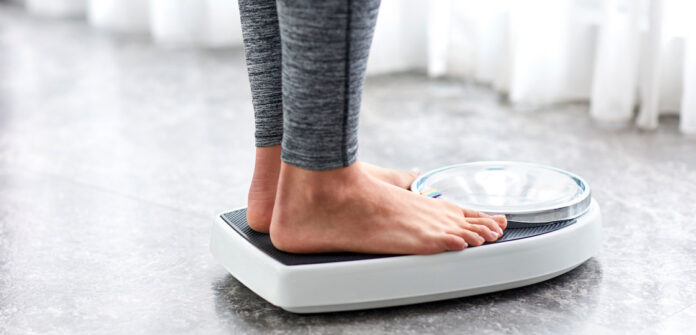Whether your goal is to undergo a significant transformation or just drop a few pounds, you’ve probably heard a lot of advice on weight loss: “No meat! No carbs! No fat! Don’t eat after 7 p.m. Don’t you dare skip breakfast. Put your fruit and veggies in a blender and drink them. Do cardio on an empty stomach!” Phew, there sure are a lot of rules out there.
But weight loss isn’t about “this one easy trick.” It’s not about tricks at all. Weight loss is not about magic. It’s about math. Weight loss occurs when the body expends more calories than it consumes, a caloric deficit. Weight gain, on the other hand, occurs when it consumes more calories than it expends, which means a caloric surplus.
How much weight is gained or lost depends on the body and the amount of caloric deficit or surplus, but the physiology that’s the same for everyone is this: one pound of fat is equal to about 3,500 calories. That means to lose one pound of fat, you must consume 3,500 calories less than your body requires. So how do you do put this math to use?
DETERMINE YOUR MAINTENANCE CALORIES
There are quite a few online calculators that will help you. Pick one, and enter your current weight, gender, age and level of activity. For the latter, consider not adjusting for workouts, as you can make up for this later. Rather, use your job as your activity barometer. If you sit at a desk all day for work, you’re a lot more sedentary than a construction worker or landscaper.
Once you have this plugged in, the calculator will give you an estimate of your maintenance calories—how much you can consume without gaining or losing weight.
Keep in mind, this is an estimate. To determine its absolute accuracy, you’ll have to eat right at this level every day for about a week. If you gain weight, the maintenance calories number is too high. If you lose weight, it’s lower than your actual caloric needs. Adjust accordingly.
COUNT CALORIES
Nobody wants to hear this. But calorie counters and mobile apps make this easy these days. If you can enter into your phone what you eat, it will add up the calories for you. And most apps store entire meals, which means the next time you eat the same thing, it’s even easier.
After you’ve done it for a while, you might find that counting calories will become easier over time. Also, as you start seeing the calories in all the foods you eat, you’ll likely start to just know what to eat and what to avoid. The more math you see, the more natural the weight-loss process will become for you.
CALCULATE EXERCISE COSTS
When you exercise, you expend energy, which is what a calorie is—a unit of energy measurement. Once you have your maintenance calories number and are counting the calories you consume, you then have to take into account what you burn through any activity.
You can lose weight while just lying on the couch if you eat at a caloric deficit, but if you are walking the dog, hitting the treadmill, mowing the lawn, etc., the time and intensity of the activity will affect your caloric deficit or surplus.
That means if you eat 300 calories over your maintenance number one day, but go for a three-mile run, you probably will net out at a zero surplus for that day.
SET GOALS YOU CAN HIT
Remember, a pound of fat is 3,500 calories. So if you eat under your maintenance calories by 500 per day, you’ll lose a pound of fat each week (7 days times 500 calories per day). That’s not an unreasonable expectation for most people.
But if you’ve never paid close attention to calories, you might not have any idea what’s reasonable for you. Once you get your maintenance calories, you might want to enter a typical day’s meals into a calculator app. Can you consume 500 fewer calories than that? Can you exercise enough to burn 500 more calories? If not, you’ll have to arrive at something that works for you.
The most effective weight loss plans are the ones you can stick to. So maybe you eat 250 calories a day less and lose a half-pound a week. Or maybe you eat 700 calories less per day for six days so you can have a “cheat” day on the seventh and still hit your weekly caloric deficit.
You’ll have to figure out what works for you. But once you know the math, it’s a little easier to put an effective plan into action. Every human body is a little different, but the calorie math is not. It’s the same math for everyone, and there’s no magic about it.
The post Weight Loss: It’s About Math, Not Magic appeared first on FitMinutes.









